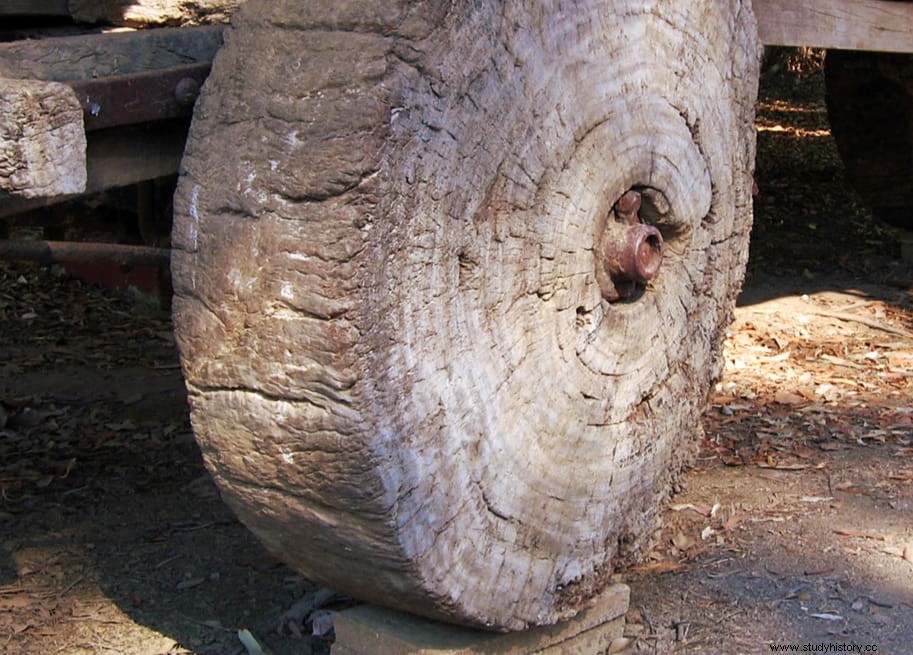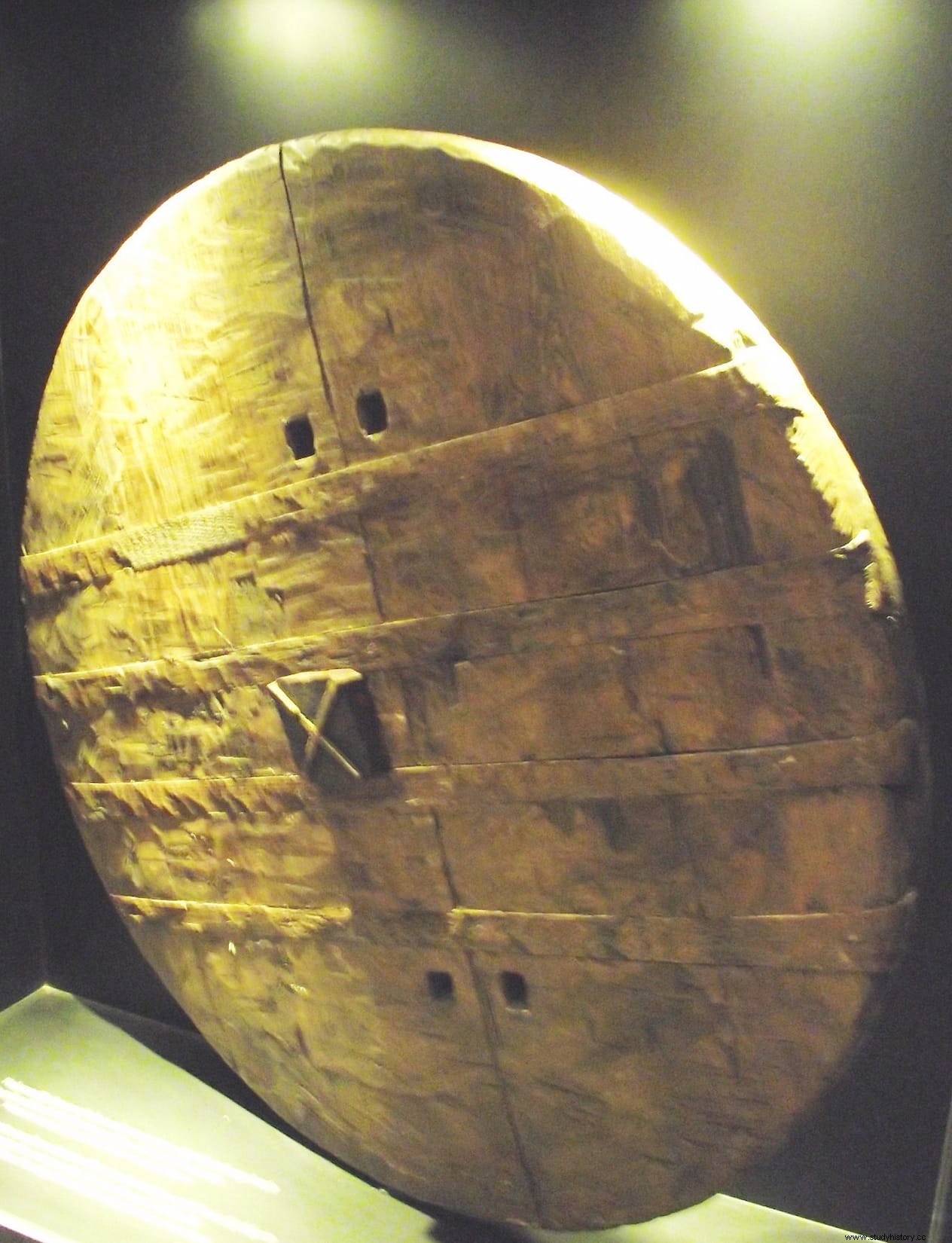There is no doubt that one of the great milestones of Humanity has been the invention of the wheel. Obviously, the exact moment in which it appears in our history is unknown and until relatively recently the oldest reference was the Mesopotamian civilization. But that changed in 2002, when archaeological digs in Slovenia uncovered a wooden wheel that radiocarbon dating revealed was between 5,100 and 5,350 years old. This makes it the oldest surviving object of this type and places the invention in Prehistory, approximately in the Chalcolithic (Copper Age).
It should be noted that in the strict sense the wheel is earlier and dates back to the Neolithic but applied to pottery wheels. Now we would be referring only to those that would be used in cars, which is where they would reach their true and transcendental dimension, coinciding with the domestication of the horse. Early wheels would be made of stone, cut tree trunks, or clay but would be too coarse, heavy, or brittle to qualify; researchers call them tourettes and there are allusions to them in Iranian pictographs from the late sixth millennium B.C.
However, the wheel itself, that is, in vehicles, has a much more doubtful paternity. The Cucuteni (Southeastern Europe, present-day Romania, Moldavia and Ukraine) and Maykop (Northern Caucasus, encompassing the entire northern coast of the Black Sea) cultures, which followed one another geographically, rival the Mesopotamian peoples in chronology. In another article, talking about the Royal Game of Ur, we said that it appears represented in the Royal Standard of that Sumerian city, which is not really a flag but a wooden box with inlaid panels showing customary and military scenes.

They show the most primitive graphic representation of wheels that we know of:several chariots pulled by onagers (Equus hemionus , a type of wild ass stronger and faster than the domestic one that has several subspecies distributed throughout the Middle East and parts of Asia) dating from around 2500 BC. They were solid wheels because spoked wheels did not appear until the second millennium BC, when we already find them in Egypt (the Hyksos introduced chariots and horses, hitherto unknown, in the 16th century BC), India, Russia, Hatti, Mitani , etc.
In Europe the original wheels were also without spokes, the oldest case being that of Blair Drummond Moss (Scotland), whose age is located in 1255 BC. However, there are much older descriptions of vehicles. A good example of this is the one that appears in the so-called Olla de Bronocice , a ceramic vessel found in the city of the same name (southern Poland), corresponding to the so-called Culture of funnel vessels and to which carbon-14 has been dated between 3635 and 3370 BC:it shows a chariot with four wheels and two axles that would be pulled by aurochs (Bos primigenius primigenius , a type of wild bovid, extinct in the 17th century, much larger than the current ones).

However, the finding in Slovenia in 2002 revolutionized the concepts that had existed until then on the subject. First, because the dating, carried out in the VERA laboratory (Vienna Environmental Research Accelerator ) placed that piece in the sixth millennium B.C. breaking all the chronologies that were handled. And second, because it was no longer a description or a graphic representation but a tangible, material object.
A team led by Anton Veluscek, from the Institute of Archeology of Ljubljana, dependent on the Slovenian Academy of Arts and Sciences, found it in some marshes about twenty kilometers from the capital when excavating the remains of a settlement of stilt houses that had already been reported. since 1875. The stilt houses, (dwellings supported by pillars on a more or less calm water surface; in this case a lake that no longer exists) have been rebuilt showing cabins 7 meters long by 3.5 wide and separated by from others by distances of 2 to 3 meters. Since 2011 they are a UNESCO World Heritage Site.
The next step was, therefore, to look for other types of things that would clarify the way of life of its inhabitants. They lived there for about 9,000 years, since the Mesolithic, based on hunting, fishing and gathering, although the settlement is not considered permanent until the Neolithic, in the seventh millennium. It was then that various pieces began to be unearthed, some as curious as a canoe or a mold for making bronze axes. However, it was going to be another cream of the cream.

The wheel is made up of two panels of ash wood, something that helped complement radiocarbon dating with dendrochronology, that is, counting the tree's growth rings. Those 5,100 or 5,350 years of antiquity that the analyzes showed lead to the deduction that one of the transcendental inventions of Man arose simultaneously in Mesopotamia and Europe, if not in more places (waiting for another discovery one day).
The wood of both pieces was charred, probably to protect it from the action of xylophagous parasites. With a radius of 72 centimeters and a thickness of 5, it was associated with a 124-centimetre-long oak shaft, to which it was attached using wedges, from which it can be deduced that said shaft also rotated. At first it was thought that the set did not correspond to a draft vehicle but to a wheelbarrow, but now the opinion seems to lean towards a pair of animals being yoked.
Subjected to a restoration process that lasted a decade and was carried out at the Archaeological Research Institute of Mainz (Germany), it can currently be seen at the Ljubljana Museum.
